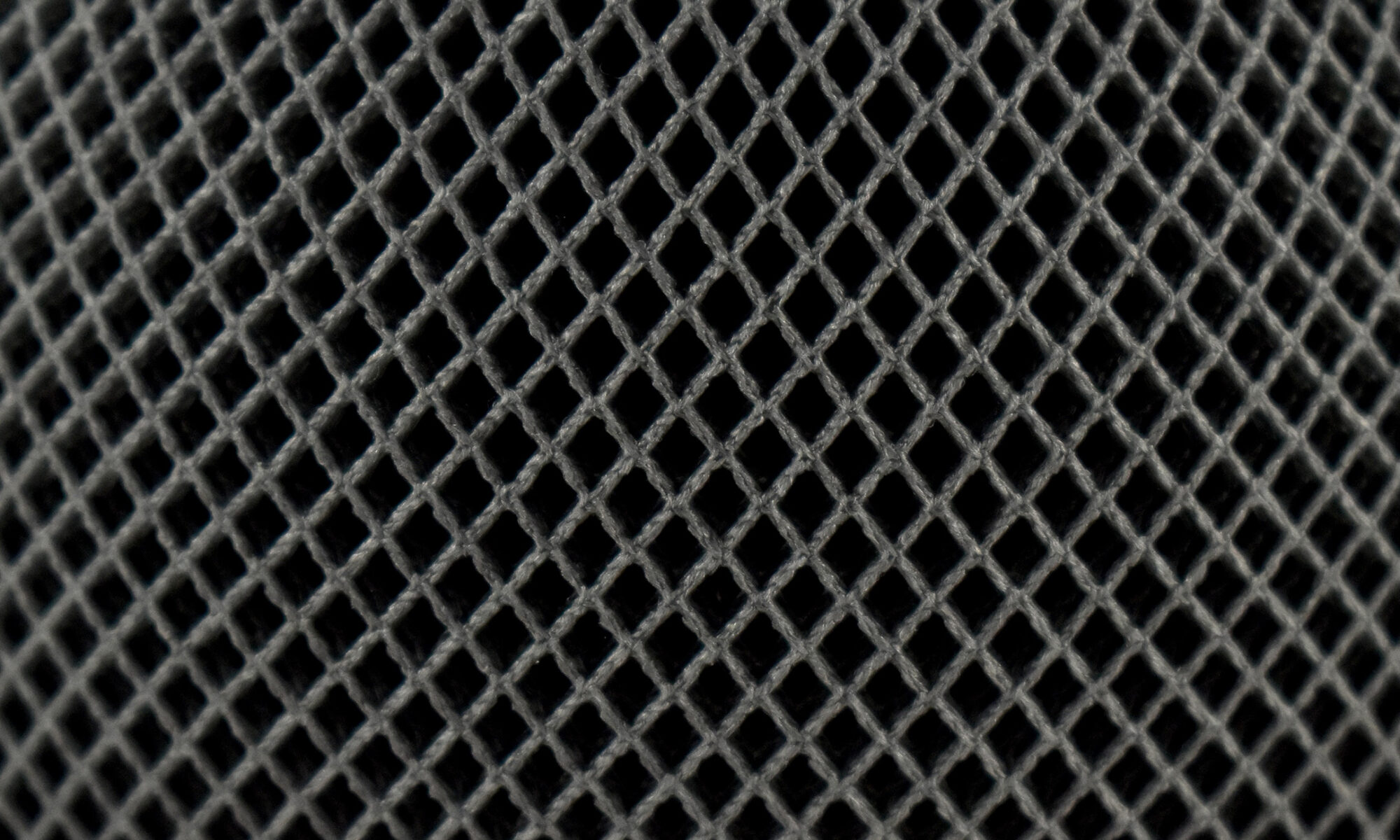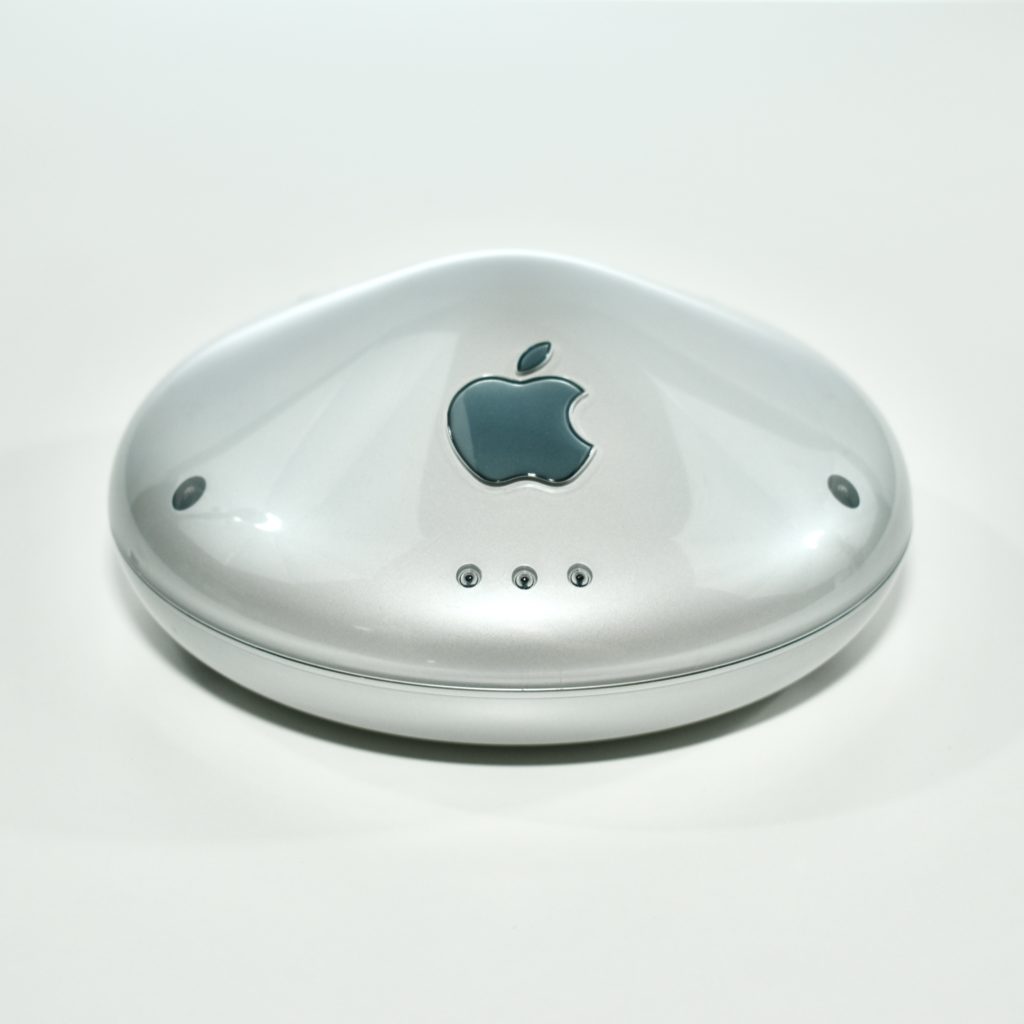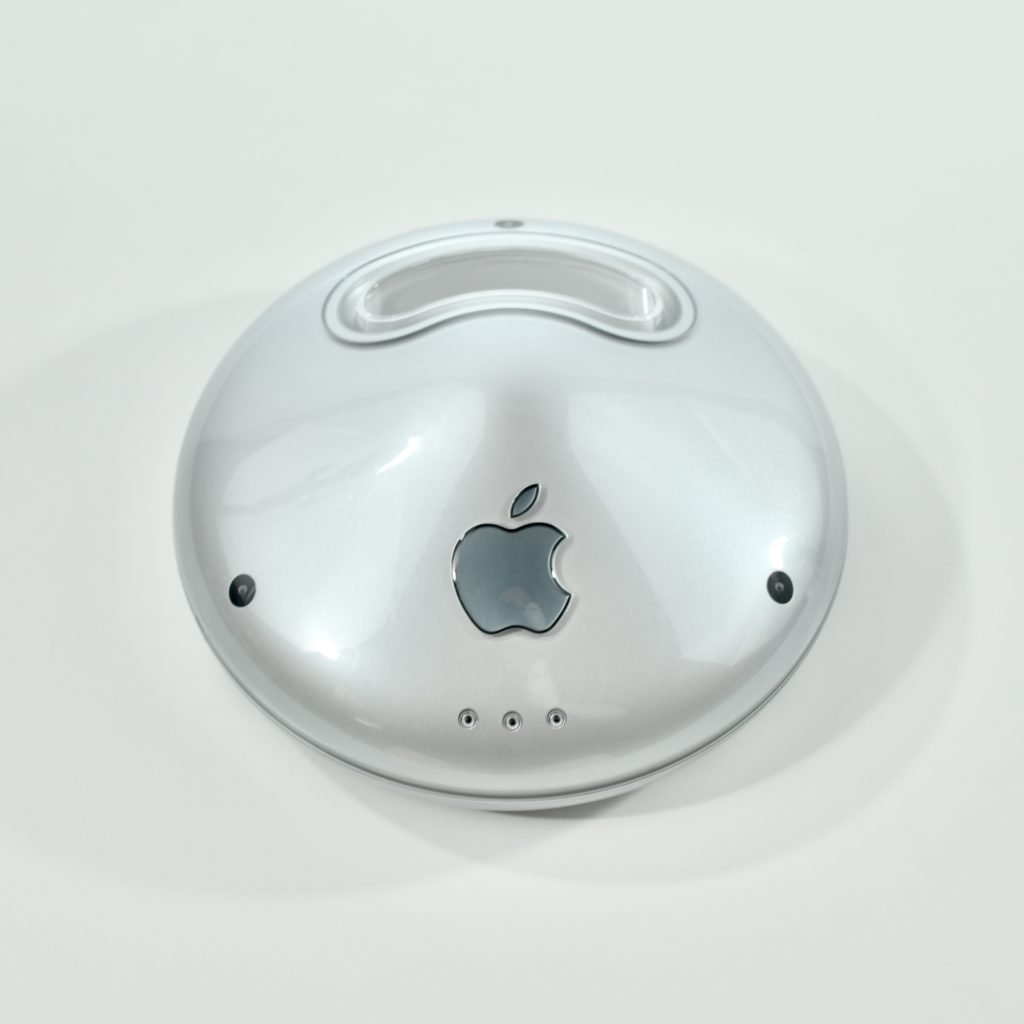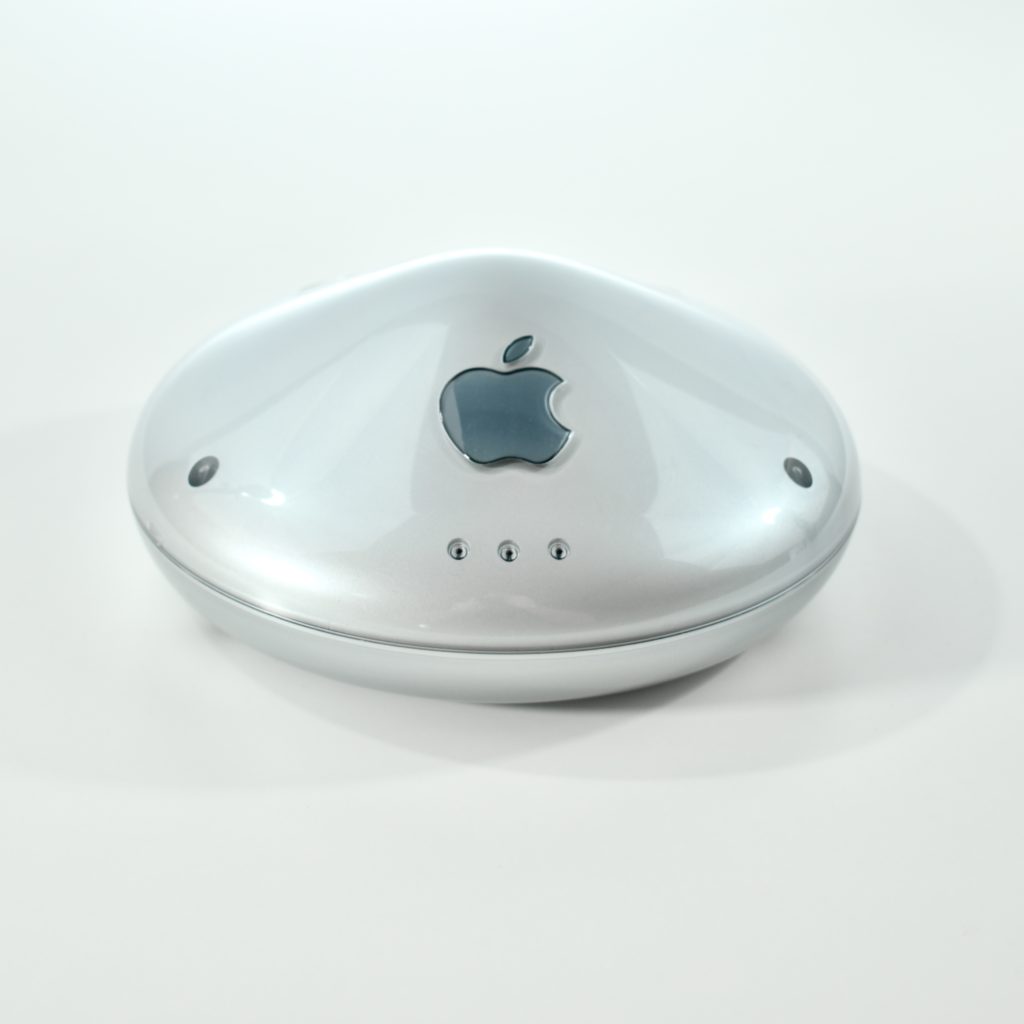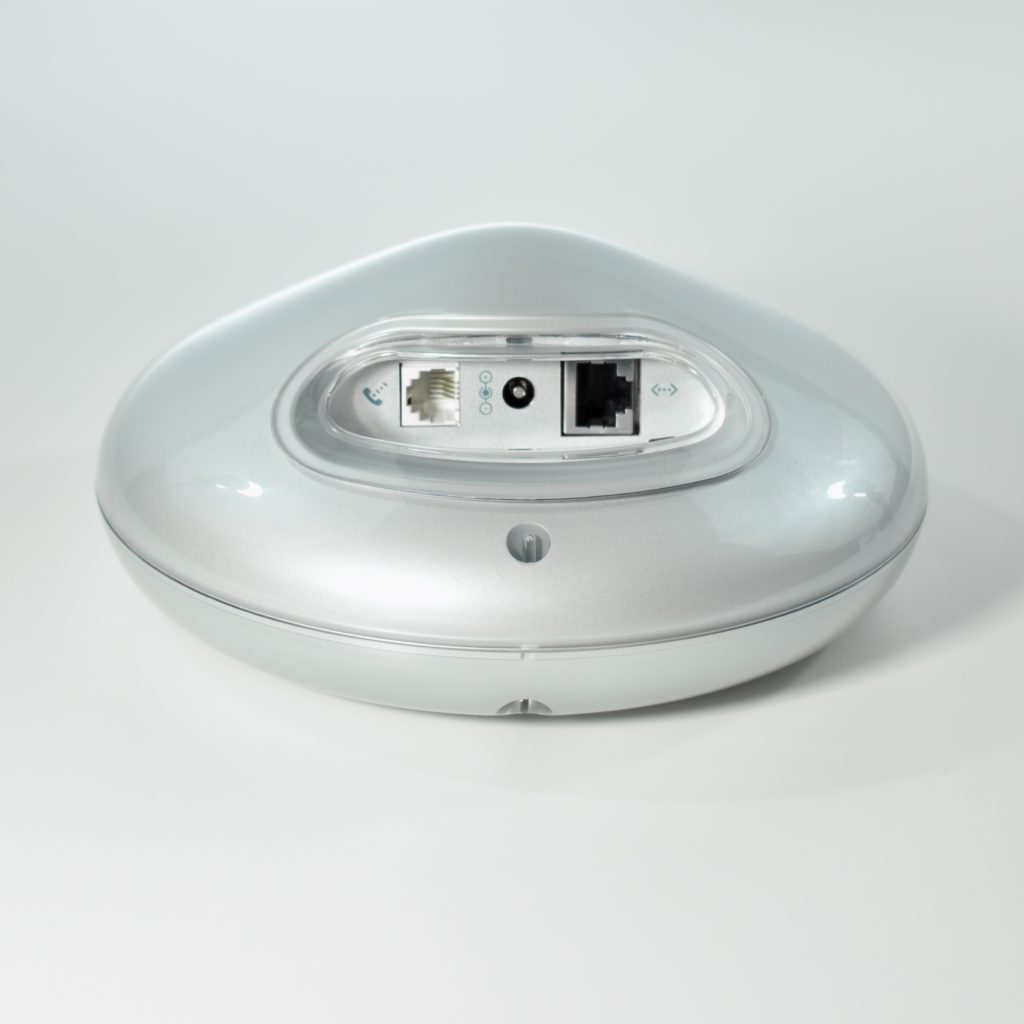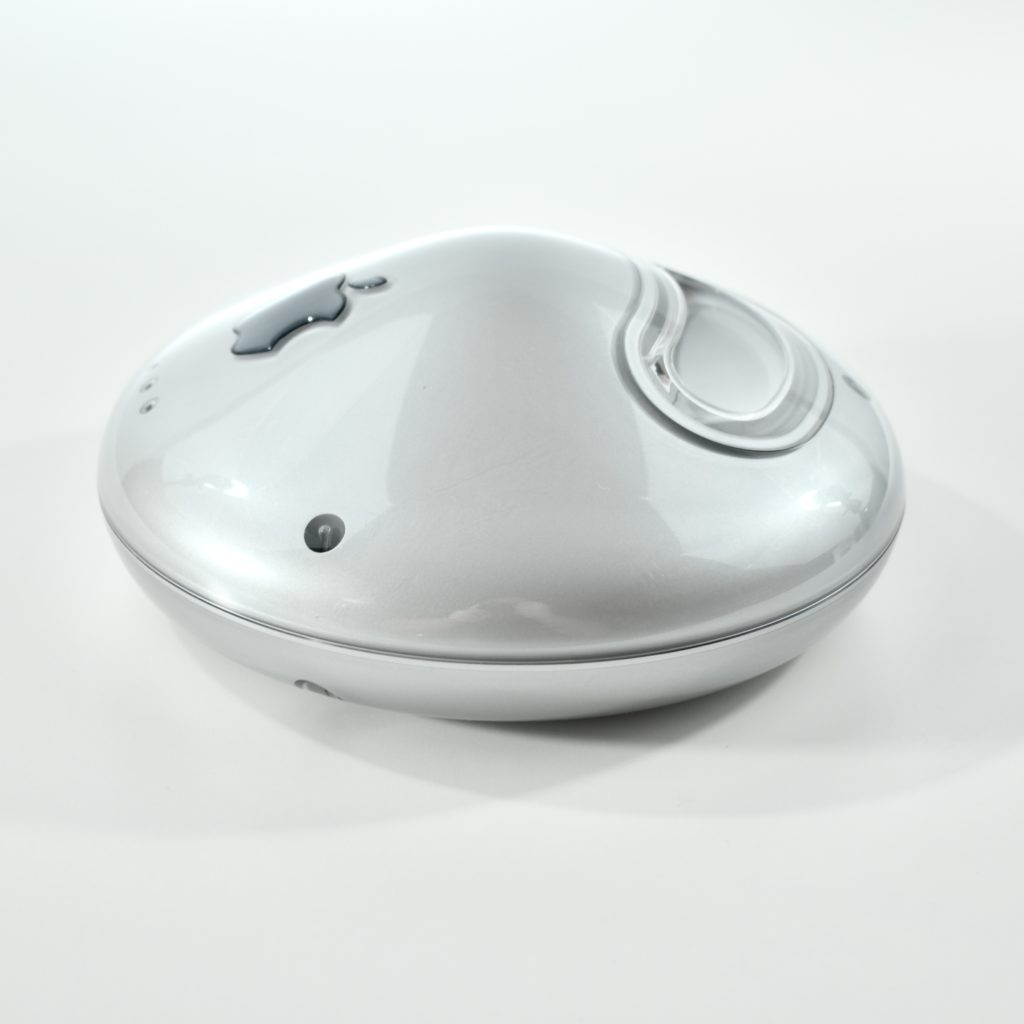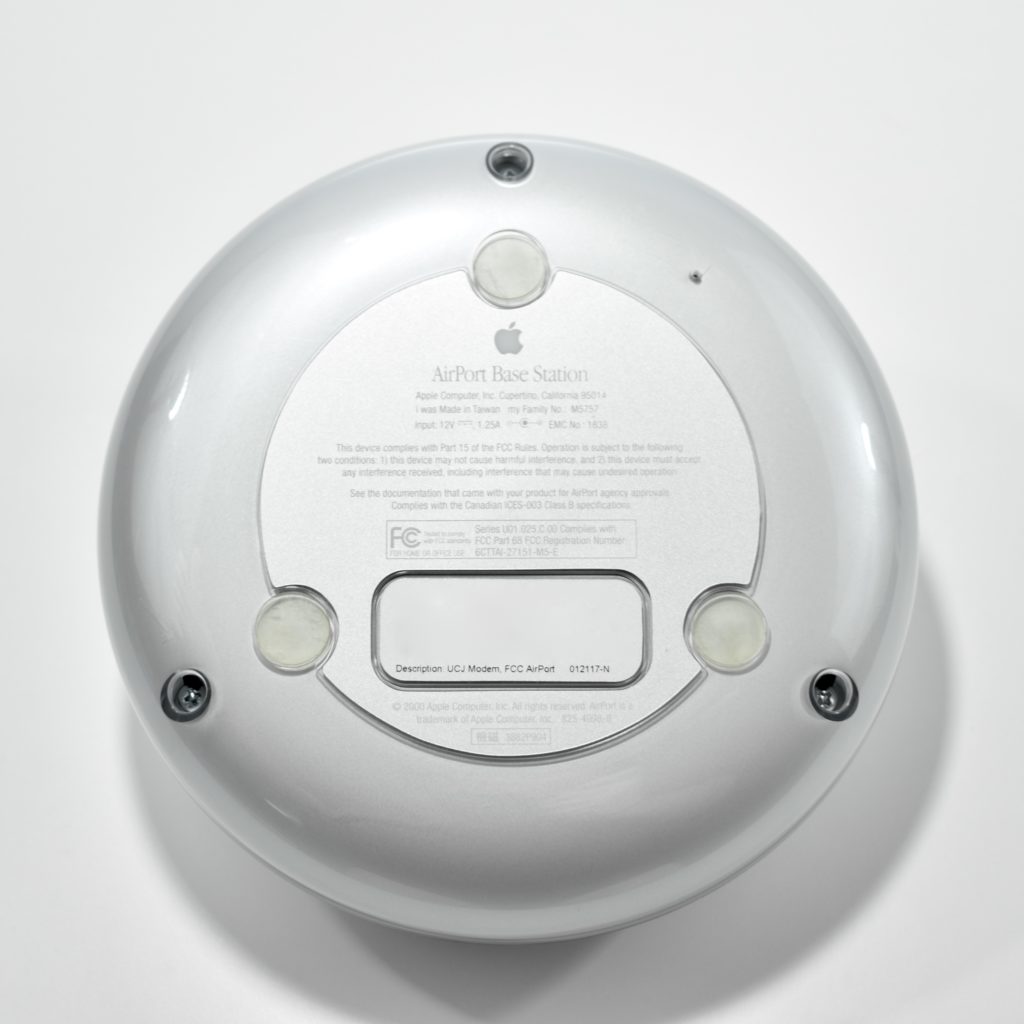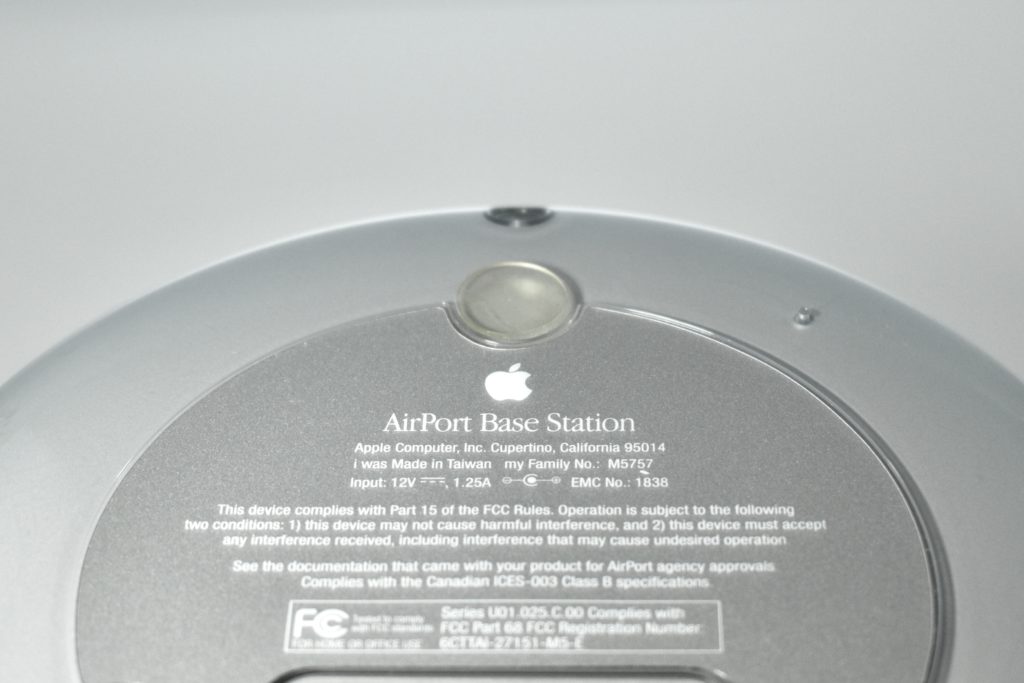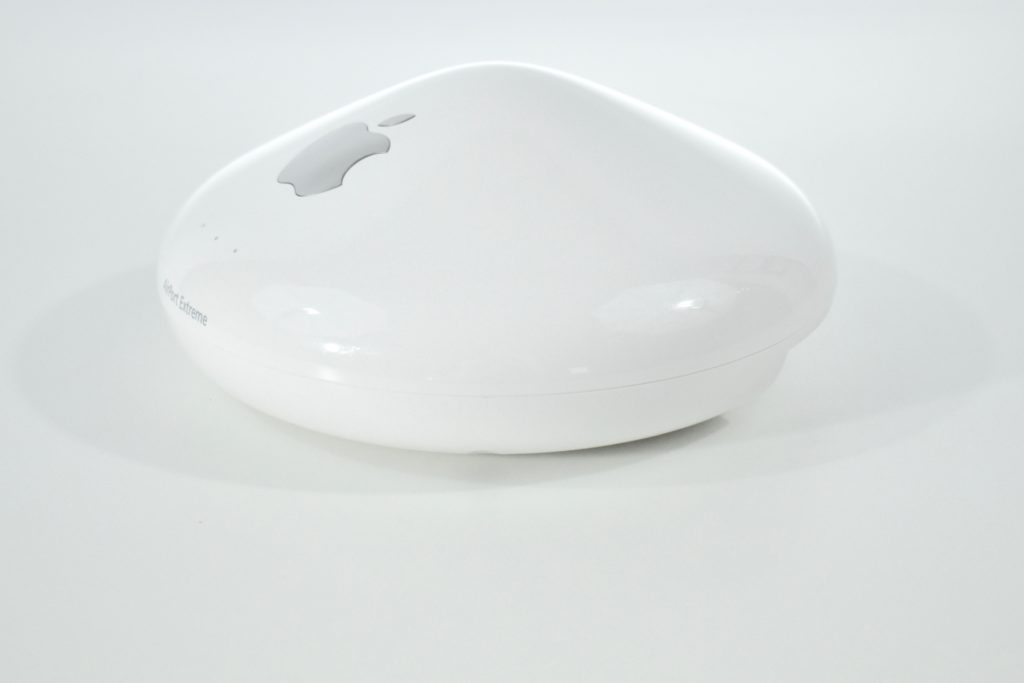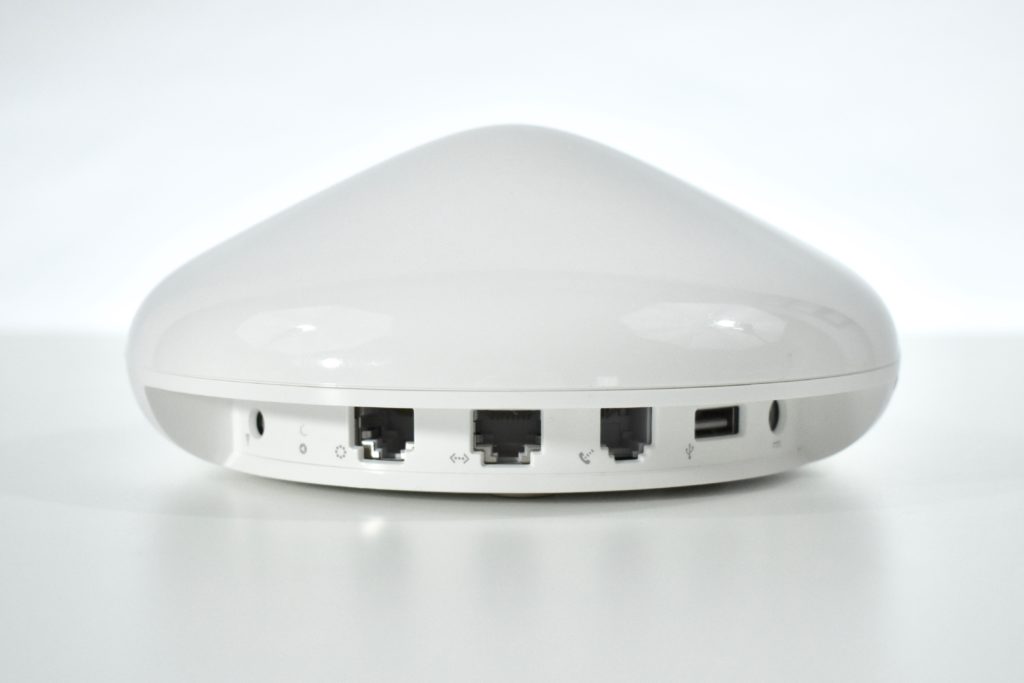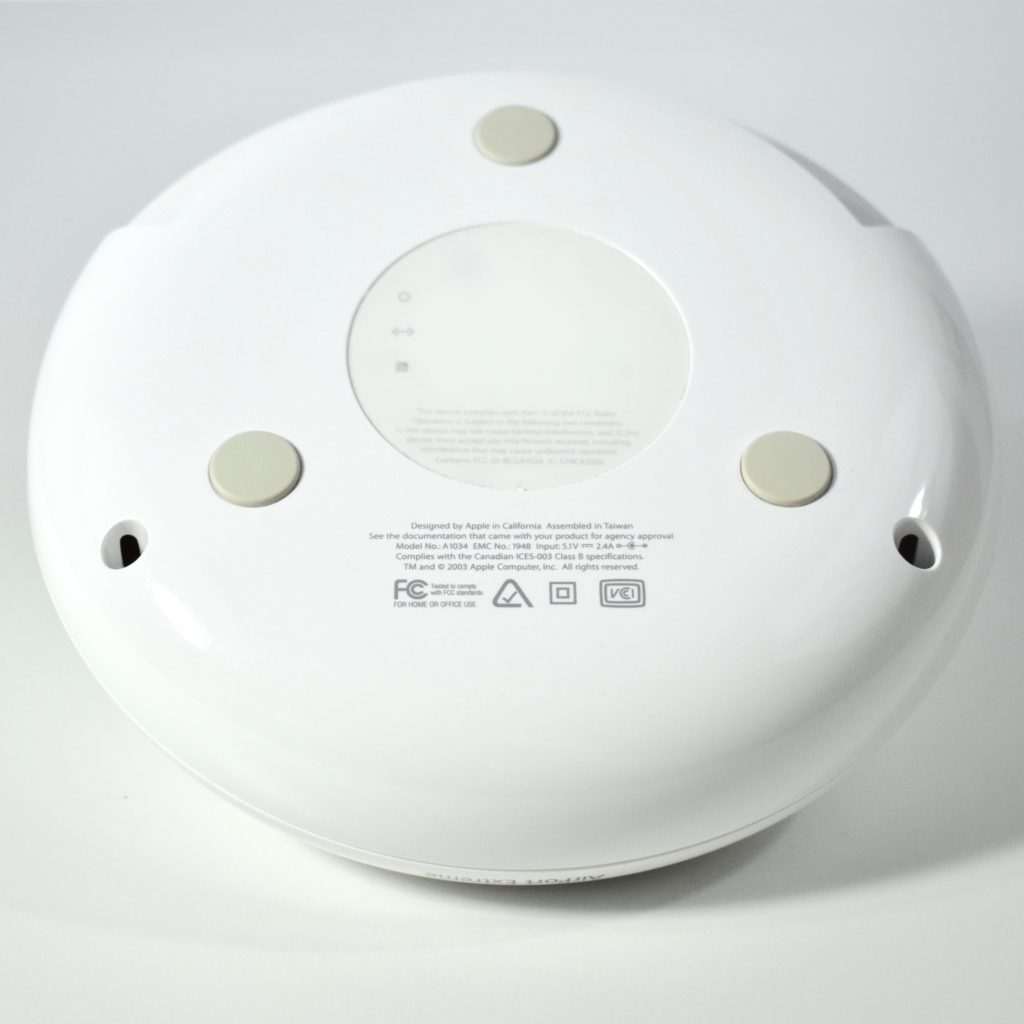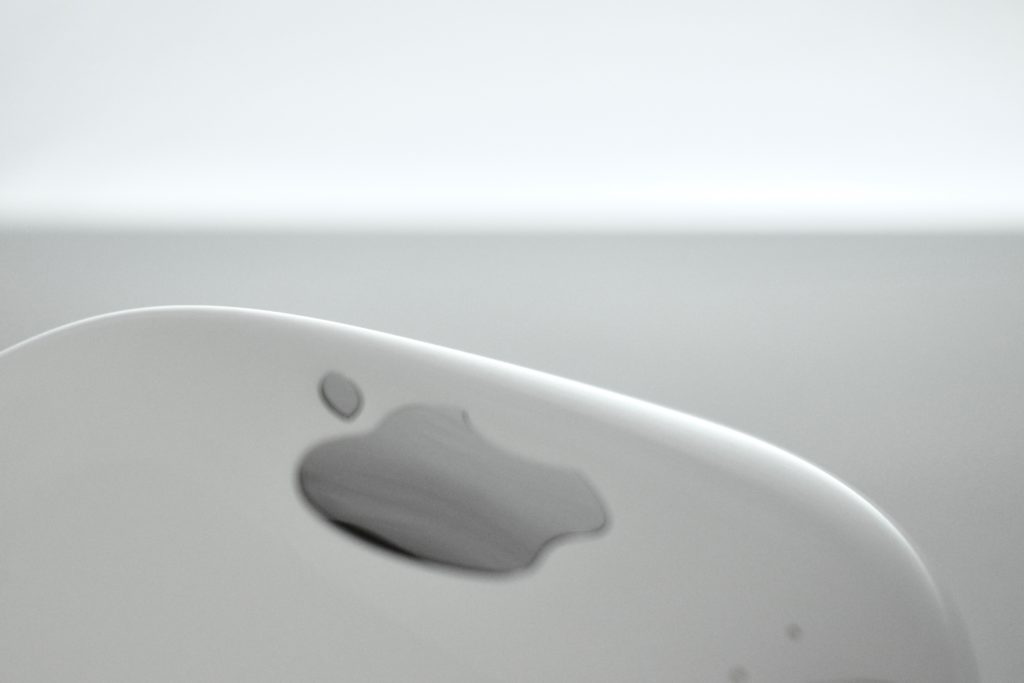The original AirPort Base Station was released along with the original iBook (blueberry and tangerine) at the 1999 MacWorld conference and expo in New York City. An optional AirPort card was available for the iBook (a repackaged Lucent ORiNOCO Gold Card PC Card adapter) and this graphite AirPort Base Station provided one of the first consumer WiFi base stations that was relatively easy to set up and manage.
The original AirPort system including the AirPort card and AirPort Base Station allowed transfer rates up to 11 Megabits/second.
Soon after MacWorld, Apple began airing a TV commercial for the AirPort Base Station featuring a 1950s-style Sci-Fi soundtrack and the base station flying in like a flying saucer.
Sources: Wikipedia, Museums Victoria (Australia)
